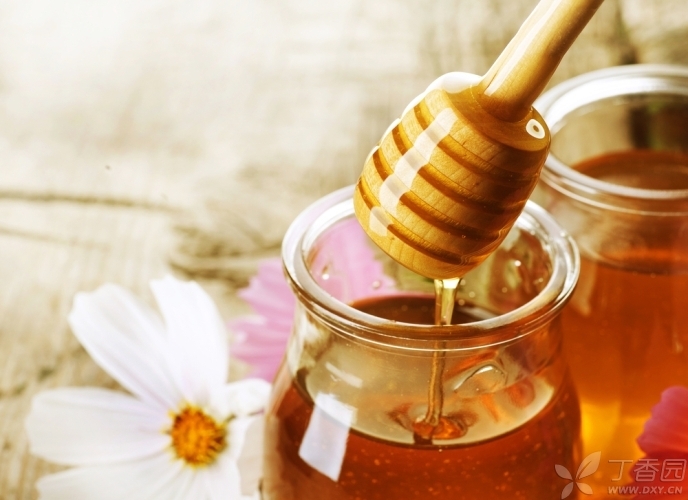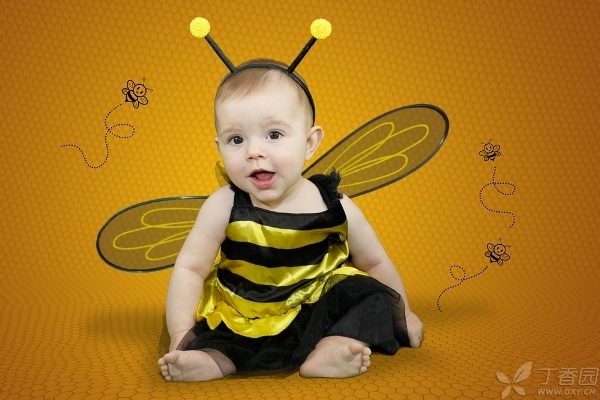
< < Condor Hero > > 82nd time: [Yang Guo adjusted less than half a bowl of honey paste, picked up Guo Xiang and fed her, and put her in a stone room in the distance…] Dear mothers, don’t doubt the wrong way to open it. This is indeed the public micro-signal of [Clove Mommy], not the martial arts novel channel.
It’s just that I’m thinking that old Mr. Jin Yong may not have brought much children before he let Yang Guo feed honey water to the infant Guo Xiang.
In the 1970s, The United States was the first to discover the death of Clostridium botulinum infection caused by infant consumption of honey. Honey samples were tested in California in 1978. It was found that 10-15% of honey samples contained spores of Clostridium botulinum. In the same year, the California Department of Health issued a circular advising infants under the age of 1 not to eat honey. This reminder is still out of date. The British Food Standards Administration issued a press release in 2012 reminding parents not to feed honey to infants under the age of 1.
Is the spores of Clostridium botulinum what?
Many mothers want to ask, why is there botulinum in honey? Isn’t botulinum used for beauty?
The Power of Clostridium Botulinum
In fact, it is only an unexpected discovery that Clostridium botulinum can be used for beauty treatment. Compared with its benefits, Clostridium botulinum is even more destructive. When Clostridium botulinum reproduces and grows to a certain extent, it will produce botulinum toxin. If eaten carelessly, it can kill people in less than 1 microgram. Therefore, Clostridium botulinum was used as a biological and chemical weapon during World War II.
How to kill Clostridium botulinum
This sounds horrible. But fortunately, Clostridium botulinum is very afraid of heat and can be killed by the most common pasteurization method (heating above 60 degrees Celsius for 30 minutes). Pasteurization is the most basic method of modern food technology, so in most modern packaged foods, the threat from Clostridium botulinum itself is minimal and negligible.
Clostridium botulinum will [transform]
However, some microorganisms will [transform], It is [with its own weapons]. For example: Clostridium botulinum. When the environment becomes too harsh and makes them uncomfortable, such as too hot or too dry, it will go to sleep, wrapping itself like a cocoon with some protein and sugar substances, forming spores and becoming [invulnerable]. When the environment is suitable, the spores of Clostridium botulinum will form Clostridium botulinum again.

Why is it that only the baby is poisoned?
Honey contains Clostridium botulinum. Botulinum toxin, It is a neurotoxin produced by Clostridium botulinum during reproduction. Compared with babies over one year old, The structure of the intestinal flora of the babies is very unstable. While eating honey, Clostridium botulinum enters the intestinal tract of the babies together. The intestinal flora cannot inhibit the reproduction of Clostridium botulinum, thus producing botulinum toxin and poisoning the babies.
What are the manifestations of botulinum toxin poisoning?
According to the definition of the United States Centers for Disease Control and Prevention (CDC), Botulinum toxin can interfere with people’s nerve conduction function, and more serious poisoning may affect cranial nerves. Therefore, after baby botulinum toxin poisoning, it will be manifested as [drowsiness, eating less, constipation, crying fatigue and general weakness]. When the disease further develops, the baby may suffer from paralysis of the whole body muscles.
Once it happens, if parents can find it in time, they will send it to a doctor immediately. The baby can get immediate treatment. For most babies, the above symptoms will disappear within 1-3 months.
Honey can also [hide and seek]
Although, many parents may notice that honey is not given to babies under one year old, However, as a kind of food, honey, It may not only appear alone, But hidden in other foods, For example: Honey graham crackers, Honey nut cereals, Honey wheat bread, etc. This is a point that parents are easy to ignore. Although these foods are processed before they are finished, spores of Clostridium botulinum may still remain in the food. If you insist on giving these foods to your baby, consult a food expert to ensure safe consumption.
Responsible Editor: Jing Liu
